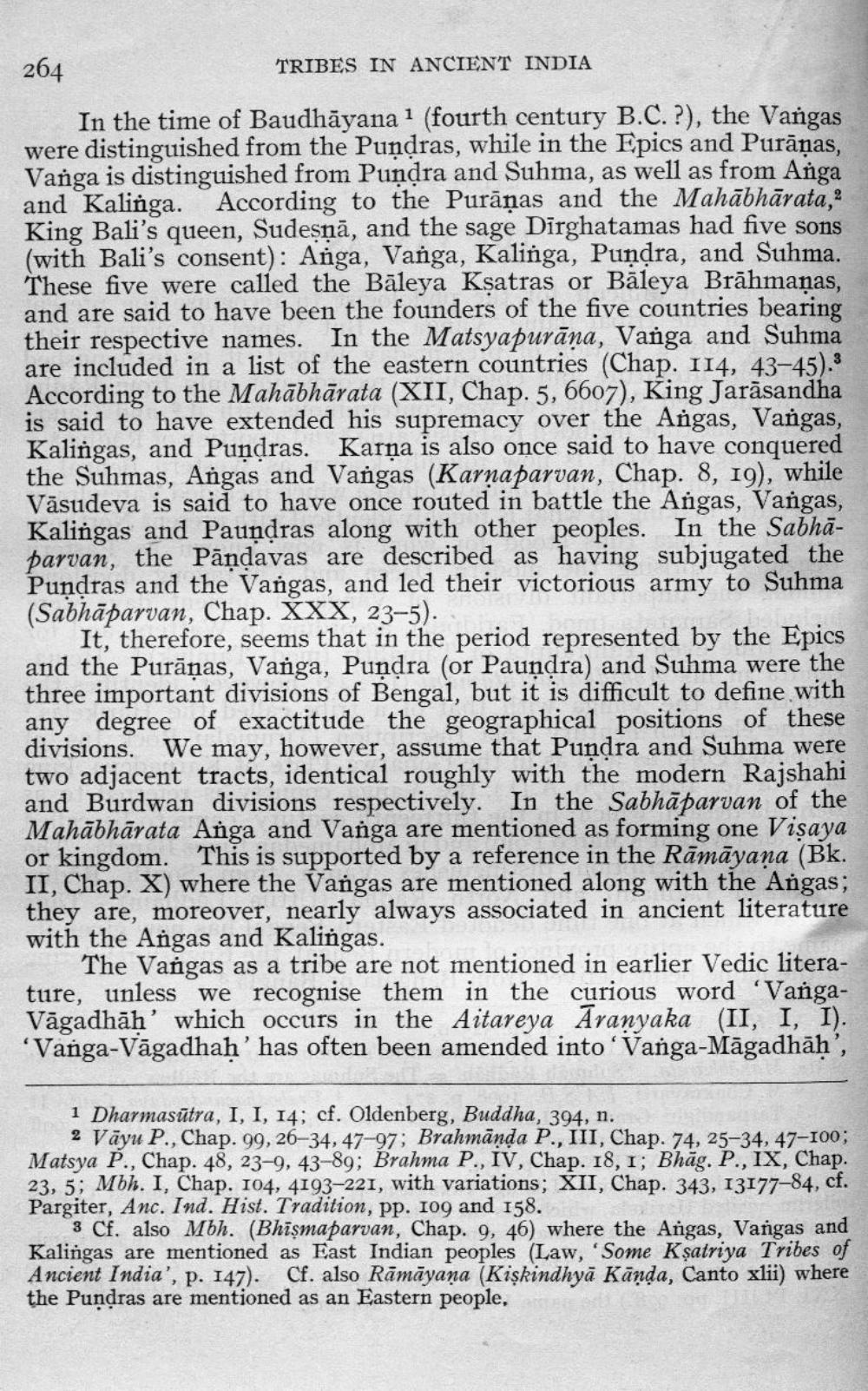________________
264
TRIBES IN ANCIENT INDIA In the time of Baudhāyana 1 (fourth century B.C. ?), the Vangas were distinguished from the Pundras, while in the Epics and Purāņas, Vanga is distinguished from Pundra and Suhma, as well as from Anga and Kalinga. According to the Purāņas and the Mahābhārata, 2 King Bali's queen, Sudesņā, and the sage Dirghatamas had five sons (with Bali's consent): Anga, Vanga, Kalinga, Pundra, and Suhma. These five were called the Bāleya Ksatras or Bāleya Brāhmaṇas, and are said to have been the founders of the five countries bearing their respective names. In the Matsyapurāna, Vanga and Suhma are included in a list of the eastern countries (Chap. 114, 43-45).3 According to the Mahābhārata (XII, Chap. 5, 6607), King Jarāsandha is said to have extended his supremacy over the Angas, Vangas, Kalingas, and Pundras. Karņa is also once said to have conquered the Suhmas, Angas and Vangas (Karnaparvan, Chap. 8, 19), while Väsudeva is said to have once routed in battle the Angas, Vangas, Kalingas and Pauņdras along with other peoples. In the Sabhāparvan, the Pāņdavas are described as having subjugated the Pundras and the Vangas, and led their victorious army to Suhma (Sabhāparvan, Chap. XXX, 23-5).
It, therefore, seems that in the period represented by the Epics and the Purāņas, Vanga, Pundra (or Paundra) and Suhma were the three important divisions of Bengal, but it is difficult to define with any degree of exactitude the geographical positions of these divisions. We may, however, assume that Pundra and Suhma were two adjacent tracts, identical roughly with the modern Rajshahi and Burdwan divisions respectively. In the Sabhāparvan of the Mahābhārata Anga and Vanga are mentioned as forming one Visaya or kingdom. This is supported by a reference in the Rāmāyana (Bk. II, Chap. X) where the Vargas are mentioned along with the Angas; they are, moreover, nearly always associated in ancient literature with the Angas and Kalingas.
The Vangas as a tribe are not mentioned in earlier Vedic literature, unless we recognise them in the curious word 'VangaVāgadhāh' which occurs in the Aitareya Aranyaka (II, I, I). 'Vanga-Vāgadhah' has often been amended into Vanga-Māgadhāh',
1 Dharmasūtra, I, I, 14; cf. Oldenberg, Buddha, 394, n.
2 Väyu P., Chap. 99, 26-34, 47-97; Brahmānda P., III, Chap. 74, 25-34, 47-100; Matsya P., Chap. 48, 23-9, 43-89; Brahma P., IV, Chap. 18,1; Bhāg. P., IX, Chap. 23, 5; Mbh. I, Chap. 104, 4193-221, with variations; XII, Chap. 343, 13177–84, cf. Pargiter, Anc. Ind. Hist. Tradition, pp. 109 and 158.
3 Cf. also Moh. (Bhişmaparvan, Chap. 9, 46) where the Angas, Vangas and Kalingas are mentioned as East Indian peoples (Law, 'Some Ksatriya Tribes of Ancient India', p. 147). Cf. also Rāmāyana (Kişkindhyā Kānda, Canto xlii) where the Pundras are mentioned as an Eastern people,




